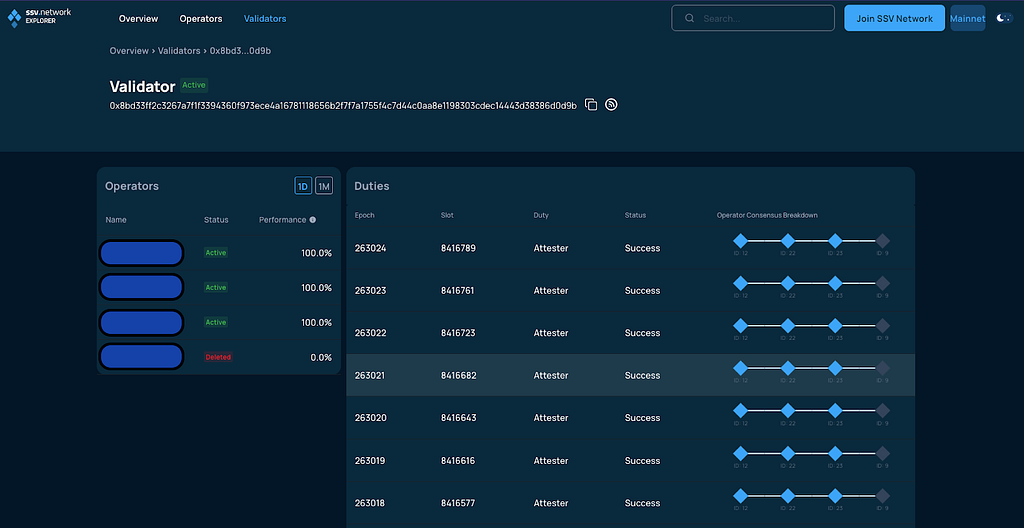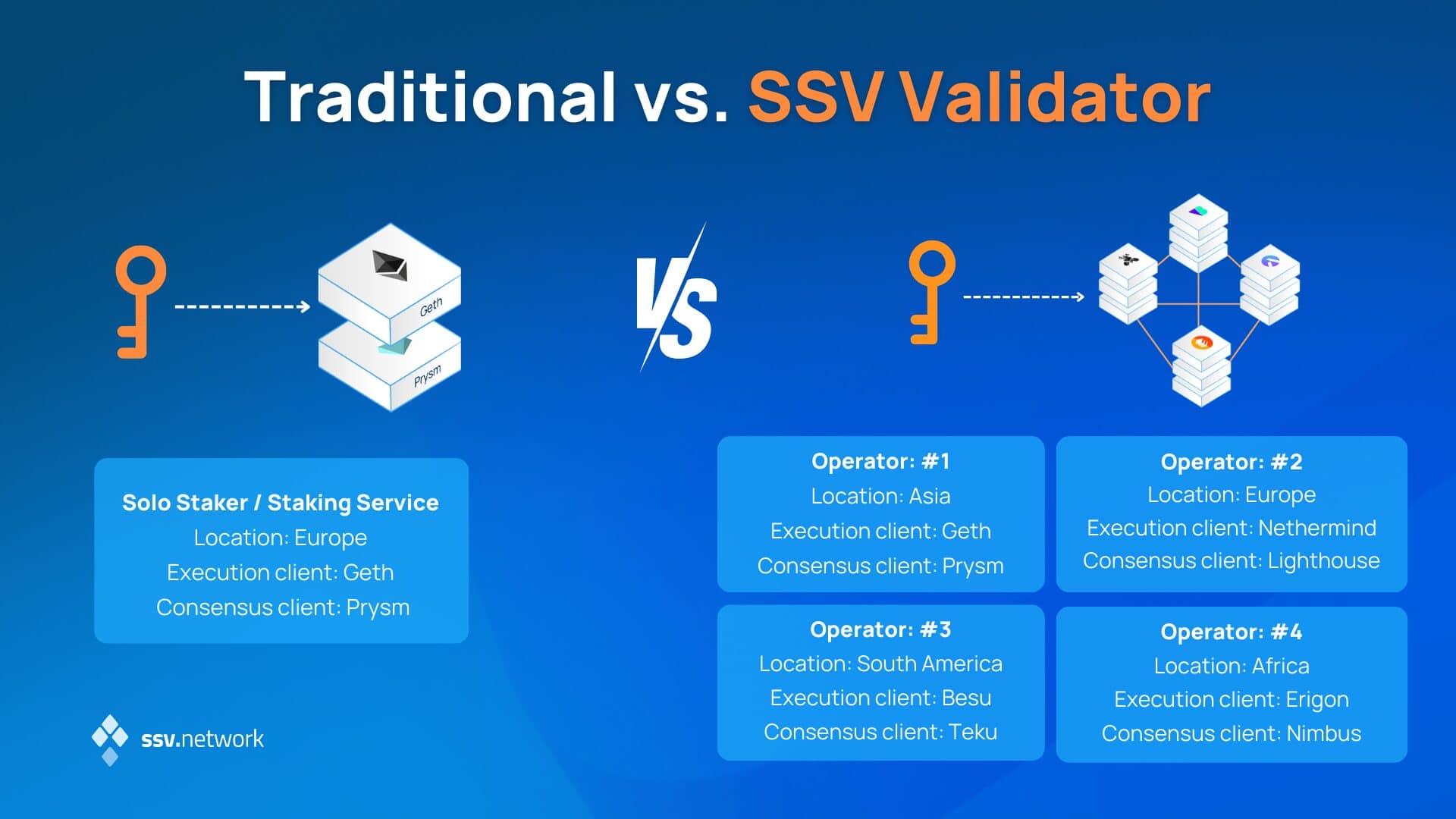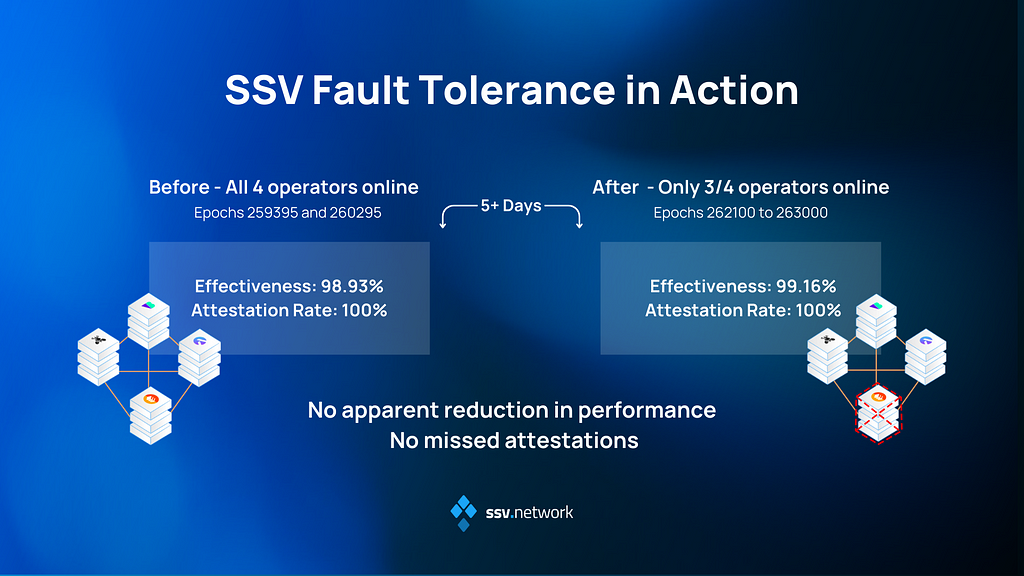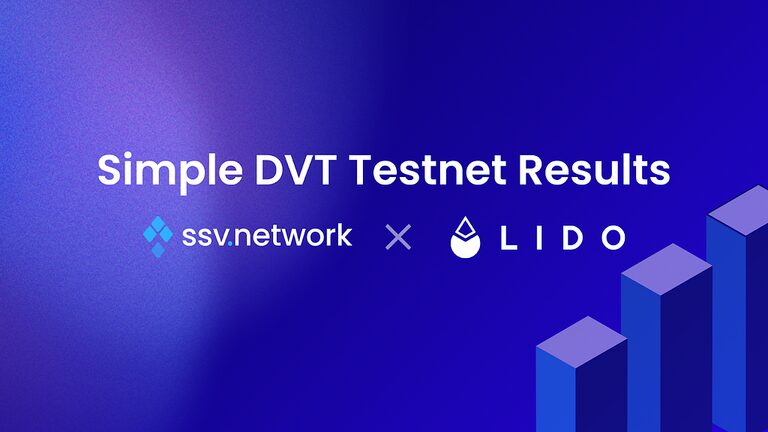
During the first week of February, an incident unfolded showcasing the resilience of ssv.network validators in the face of node operator (NO) downtime. The event involved a validator operated by 4 SSV Network NOs, where 3/4 NOs successfully kept the validator online and performing optimally despite experiencing an extended period of offline status.

As you can see in the ssv explorer, one NO has been removed from a cluster of NOs. Due to fault tolerance enabled by Distributed Validator Technology (DVT), the validator was able to stay online.

The primary objective of this case study is to highlight how SSV.Network’s DVT infrastructure addresses challenges in standard validator setups by enhancing tolerance to faulty, malicious, or under-maintenance nodes. SSV, being an infrastructure solution, enables any staker or staking application using the protocol to benefit from its inherent security and resilience.
Key Players:
- SSV Network: Provides a network for distributed Ethereum validator operation.
- Node Operators: Responsible for operating nodes in the network and running validators in a distributed manner. NOs are remunerated for their service in $SSV
- Validator: An actor on Ethereum who proposes and attests new blocks on the network. A validator stakes 32 ETH in order to participate in maintaining the network.
Event Description: A node operator was offline for an extended period, a situation that would typically lead to penalties and loss of ETH in a traditional validator setup. The remaining 3/4 nodes in the cluster continued operating the validator from epoch 261395 – 263000.

Despite the absence of one node operator, the validator continued to perform its duties seamlessly with the remaining three node operators.
Cluster sizes can increase according to the threshold 3f+1. This means that for every three nodes, one can be offline. Therefore, in a cluster of 7, two faulty nodes can be tolerated, and so on.

Challenges Faced: The challenge involved the extended offline status of a node operator. At scale this could potentially damage the Ethereum network i.e. a bug in a supermajority client, or staking service nodes going offline.
Solutions Implemented: By distributing the validator on SSV.Network it was able to remain online and perform optimally. Keyshares significantly enhance security in a cluster by distributing portions of the encrypted private key to each operator. When the Beacon chain assigns a task, each operator signs it with their assigned keyshare, and these individual signatures are amalgamated to reconstruct the complete signature for the validator.
This approach eliminates the necessity of maintaining the entire validator key in a hot wallet. Instead, only encrypted keyshares are stored, reducing attack vectors. Each keyshare is encrypted to specific operators, and no single operator can independently recreate the entire key, securing the system against potential security breaches and malicious actors.
Technological Aspects: The validator’s operation is split among multiple nodes that provide their services in the network. With zero coordination, stakers are able to choose from a list of professional node operators to communally run their validator.
When validators register to the network, the validator’s private key is split between different NOs or generated with DKG. By using diverse node operators with varying components (EL/CL clients, locations, and infrastructure), validators become more resilient by an order of magnitude.

Impact on Stakeholders: The use of SSV technology ensures that validators are more robust, mitigating risks for companies running staking services and solo-stakers. This also means that maximized uptime = maximized rewards.
Lessons Learned: The case underscores that implementing SSV technology can dramatically improve the fault tolerance of Ethereum validators.
Future Implications: The industry can evolve by building more DVT-powered applications on SSV infrastructure, contributing to the safety and reliability of next-generation staking applications. The more on-ramps that exist to DVT staking for solo-stakers, squad staking, staking pools/services, and institutions, the more distributed and robust the Ethereum network will become.
Conclusion: SSV.Network’s DVT infrastructure emerges as a critical technology for maximizing rewards, improving fault tolerance, and decentralizing Ethereum, ensuring the network’s longevity and continuous operation. The case study emphasizes the importance of innovative solutions in enhancing the resilience and security of validators and the applications built using SSV infrastructure.
Website | Builders Hub | Network Hub | Discord | Dev Center | Documentation | GitHub


